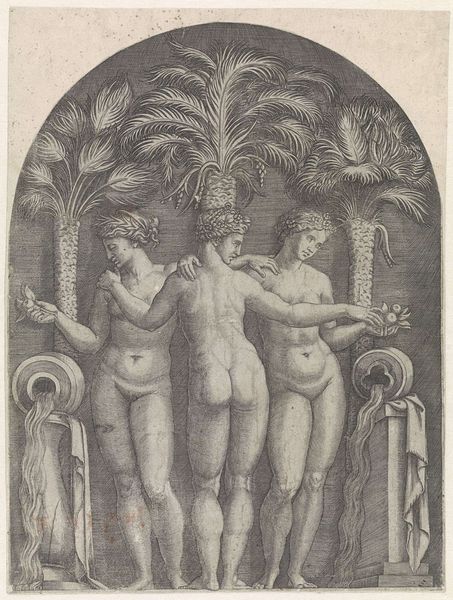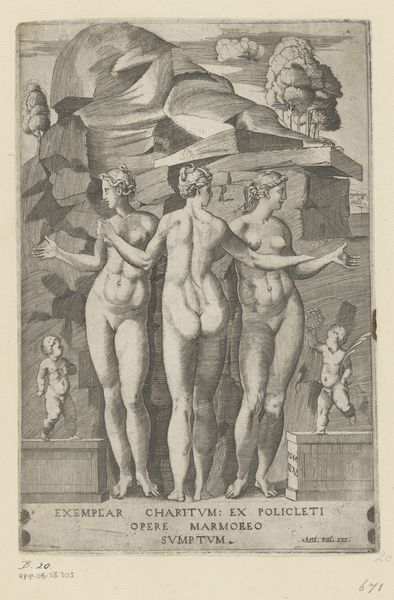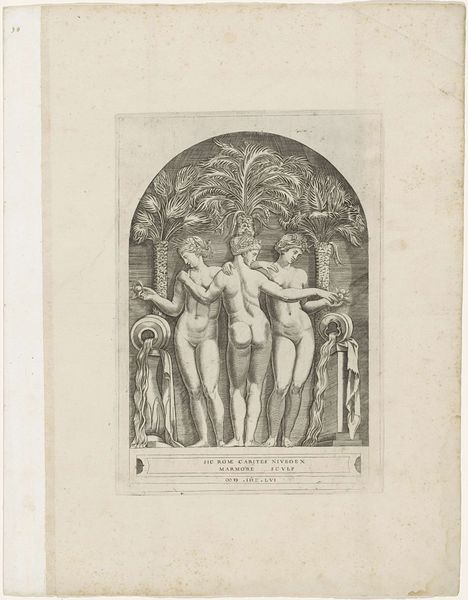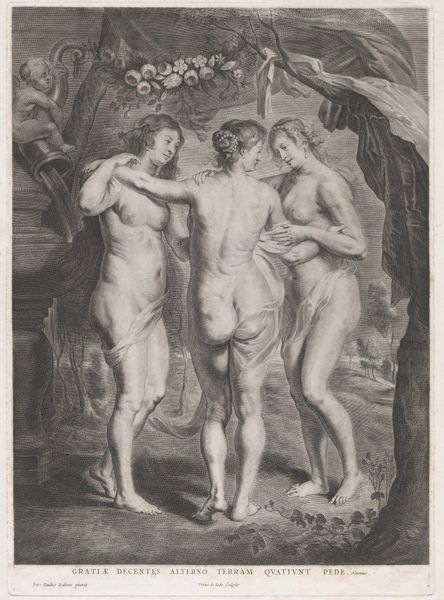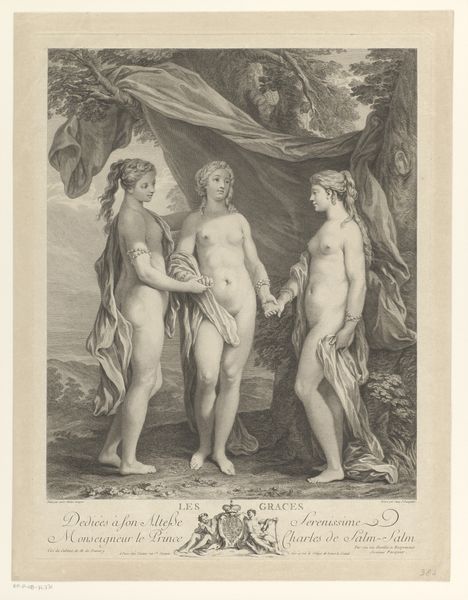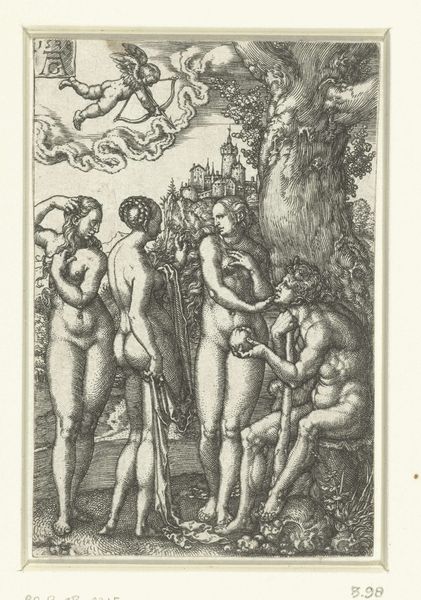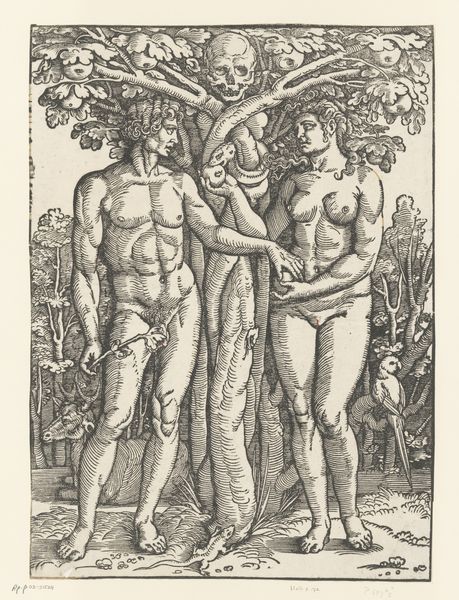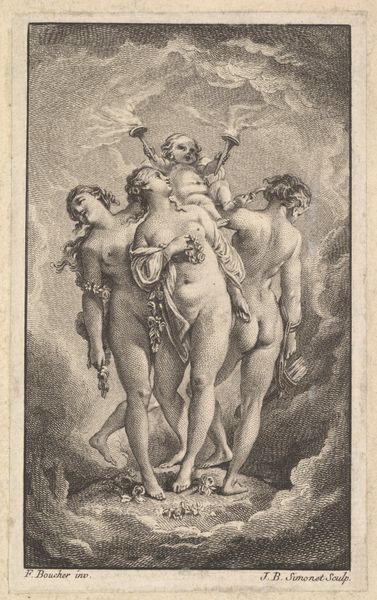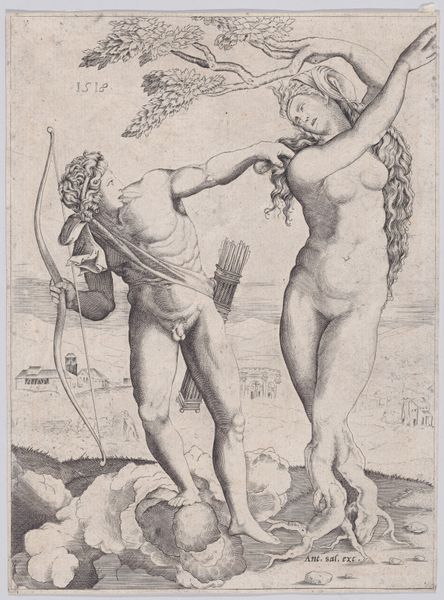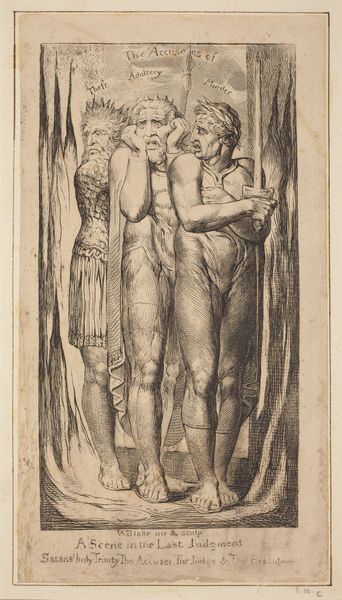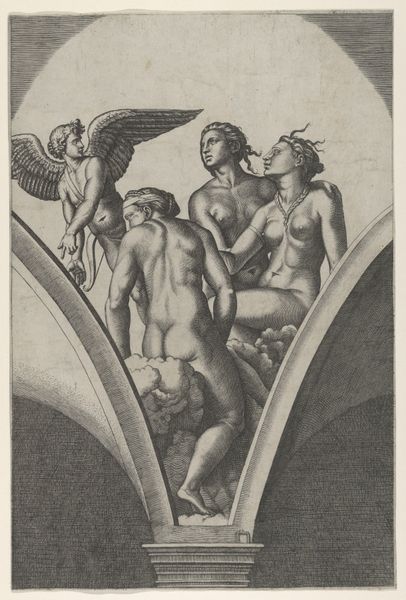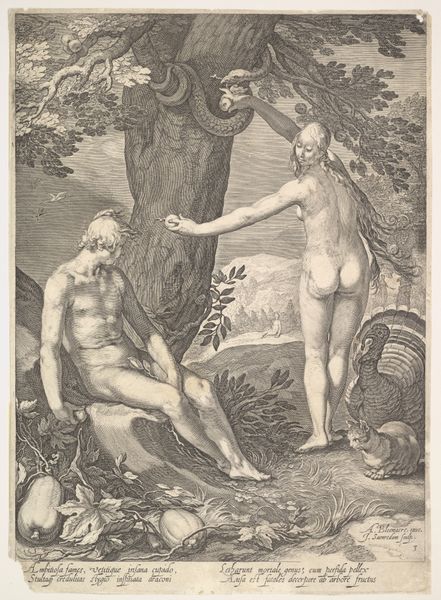
Speculum Romanae Magnificentiae: The Three Graces 1510 - 1532
0:00
0:00
drawing, print, engraving
#
drawing
# print
#
figuration
#
11_renaissance
#
female-nude
#
history-painting
#
italian-renaissance
#
nude
#
engraving
Dimensions: sheet: 18 1/2 x 13 3/16 in. (47 x 33.5 cm) plate: 14 3/16 x 9 13/16 in. (36 x 25 cm)
Copyright: Public Domain
"The Three Graces" was created by Marco Dente in the 16th century, using engraving. This wasn't just drawing; it was a labor-intensive process of carving lines into a metal plate, inking it, and pressing it onto paper. Look closely, and you can see the crispness of the lines, the way Dente uses cross-hatching to create shadow and volume. This was a print intended for a collector's album, as the inscription below indicates, and it reproduces a sculpture. Notice how the material qualities are translated. The figures stand in an arched niche, and are framed by palm trees, adding to the scene's visual depth. Engraving allowed for the relatively quick reproduction of images, and they soon became a vital mechanism in the rise of the Renaissance art market. Prints like this allowed collectors to own images of famous artworks without having to purchase the originals. The skill of the engraver, the quality of the print, and the artistry of the composition all contributed to the value of this object, and it became a commodity that was widely traded, and admired across Europe.
Comments
No comments
Be the first to comment and join the conversation on the ultimate creative platform.
